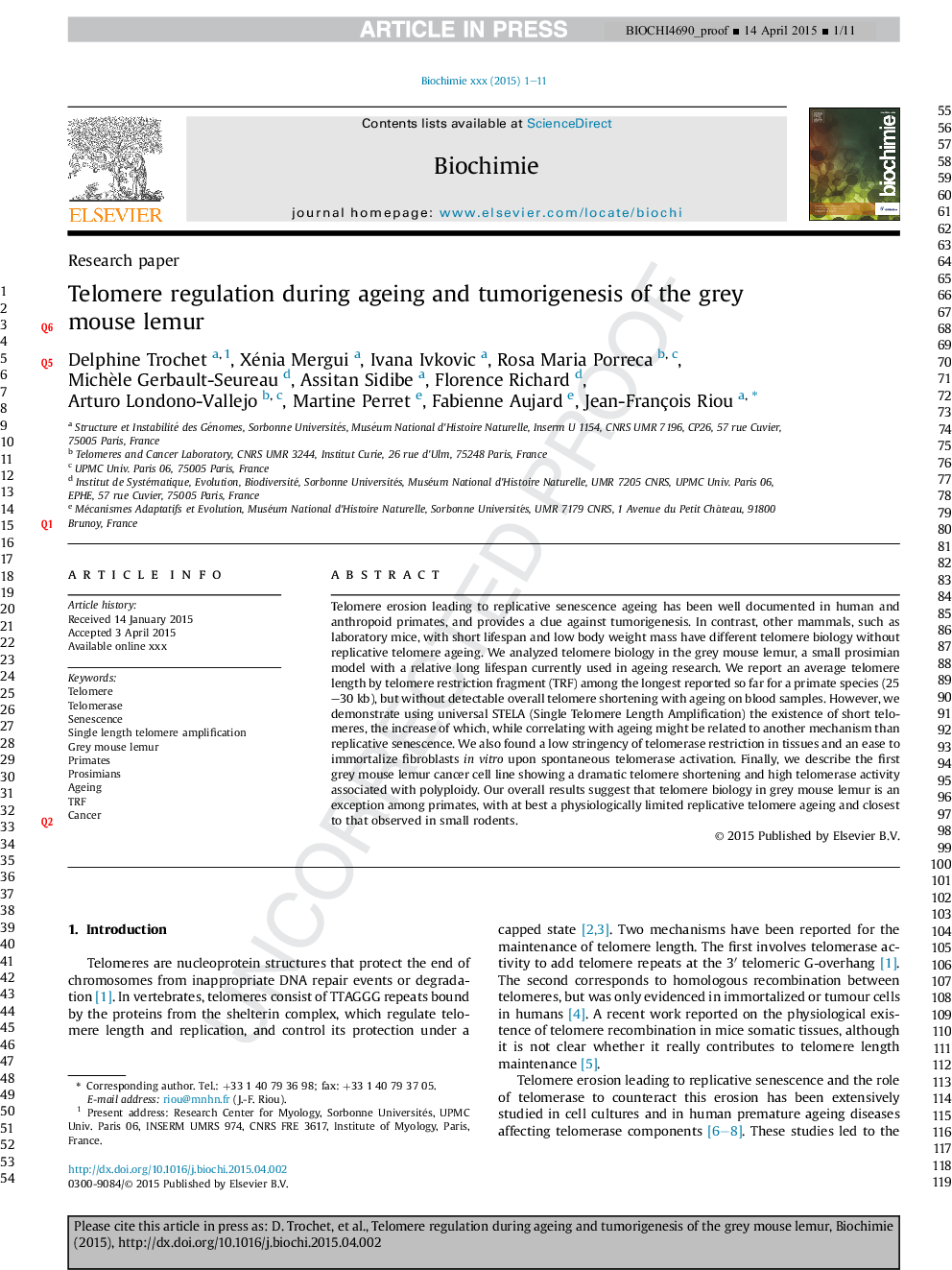| Article ID | Journal | Published Year | Pages | File Type |
|---|---|---|---|---|
| 8304977 | Biochimie | 2015 | 11 Pages |
Abstract
Telomere erosion leading to replicative senescence has been well documented in human and anthropoid primates, and provides a clue against tumorigenesis. In contrast, other mammals, such as laboratory mice, with short lifespan and low body weight mass have different telomere biology without replicative senescence. We analyzed telomere biology in the grey mouse lemur, a small prosimian model with a relative long lifespan currently used in ageing research. We report an average telomere length by telomere restriction fragment (TRF) among the longest reported so far for a primate species (25-30 kb), but without detectable overall telomere shortening with ageing on blood samples. However, we demonstrate using universal STELA (Single Telomere Length Amplification) the existence of short telomeres, the increase of which, while correlating with ageing might be related to another mechanism than replicative senescence. We also found a low stringency of telomerase restriction in tissues and an ease to immortalize fibroblasts in vitro upon spontaneous telomerase activation. Finally, we describe the first grey mouse lemur cancer cell line showing a dramatic telomere shortening and high telomerase activity associated with polyploidy. Our overall results suggest that telomere biology in grey mouse lemur is an exception among primates, with at best a physiologically limited replicative telomere ageing and closest to that observed in small rodents.
Related Topics
Life Sciences
Biochemistry, Genetics and Molecular Biology
Biochemistry
Authors
Delphine Trochet, Xénia Mergui, Ivana Ivkovic, Rosa Maria Porreca, Michèle Gerbault-Seureau, Assitan Sidibe, Florence Richard, Arturo Londono-Vallejo, Martine Perret, Fabienne Aujard, Jean-François Riou,
